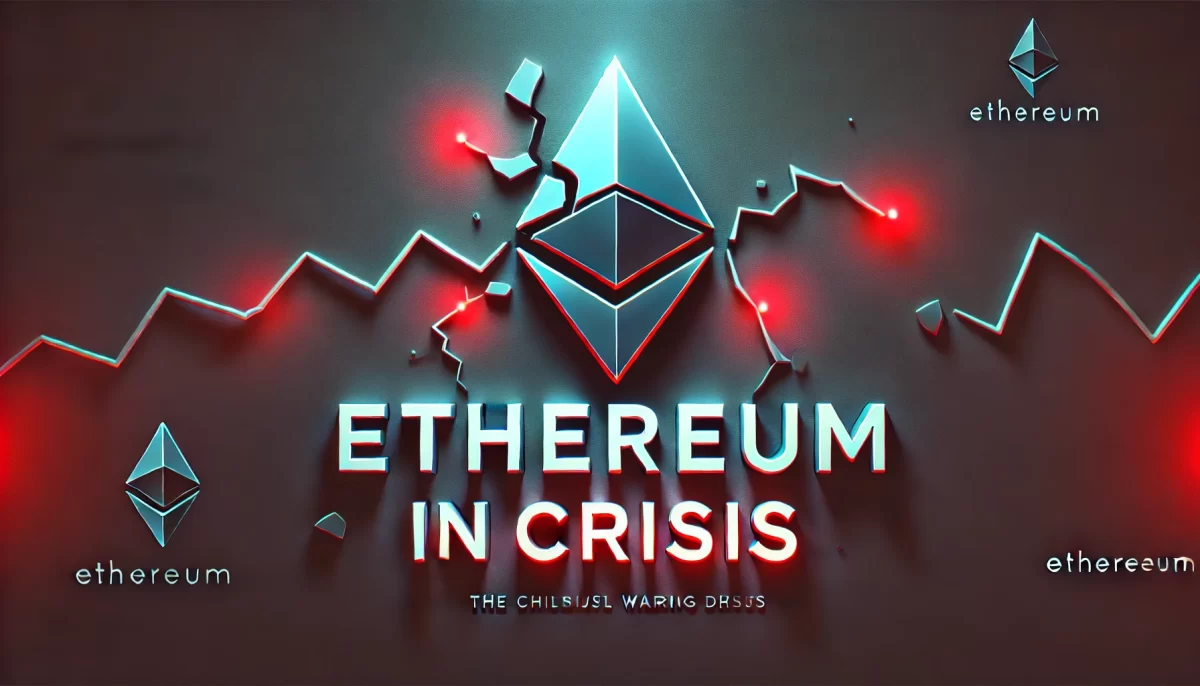# Ethereum Faces Extended Downturn Amid Market Uncertainties
Ethereum is experiencing a prolonged period of market stagnation. A combination of falling prices, reduced on-chain activity, and ETF fund outflows are contributing to heightened market uncertainty. Observers are closely monitoring whether the introduction of staking features in Ethereum spot ETFs could provide a significant turnaround.
The Ethereum spot ETF initially saw net inflows of $160 million earlier this year. However, since March, outflows have exceeded $400 million, resulting in a net outflow of $240 million. This contrasts with Bitcoin spot ETFs, which recorded net inflows of $790 million during the same period. Should staking be introduced to Ethereum ETFs, it could enhance profitability and reduce circulating supply, potentially having a positive impact on the market.
# Rising Expectations for Staking Integration
Robert Michnick, Head of Digital Assets at BlackRock, stated, “Adding staking to Ethereum ETFs could be a crucial turning point for market demand.” The annual yield from staking is approximately 3.12%, which could be an attractive feature for institutional investors compared to Bitcoin ETFs that depend solely on price fluctuations. Moreover, staking locks up ETH, reducing its circulating supply and mitigating sell pressure, potentially driving price increases. Currently, about 27.85% of Ethereum’s total supply is staked, and this could increase further if ETFs participate in staking. Major issuers like 21Shares, Fidelity, and Grayscale have already submitted their Ethereum ETF-related documents that include staking to the SEC since February.
# Persistent Structural Limitations
Despite the potential benefits, the actual impact of ETF staking has its limitations. For instance, documents submitted by 21Shares indicate that staking revenues would not be directly distributed to investors but would be attributed to the ETH custodian, Coinbase. Additionally, the staking process is managed internally by trust institutions rather than decentralized protocols like Lido Finance.
The entry and exit speeds of ETH staking also pose challenges. Depending on the network conditions, it can take weeks to months to stake or unstake assets, which could restrict ETF liquidity in rapidly changing market environments. According to analysts at Dune Analytics and The Block, even if ETFs fully participate in staking, the overall staking ratio is expected to increase only slightly to around 30%, not significantly impacting supply reduction or price increase. This ratio also remains lower compared to competing chains such as Sui (77.1%), Aptos (75.8%), and Solana (64.3%).
# Declining On-Chain Activity and Ecosystem Competition
Even with expanded staking participation, Ethereum faces fundamental challenges. In March, key metrics like daily burn rates and average transaction fees reached historic lows. On March 23, only 50.03 ETH were burned, setting a record low. Average transaction fees fell to $0.43, down 99.1% from the 2021 peak. On-chain transaction volumes and new addresses have also visibly declined. As of March 19, the seven-day average number of active addresses on the Ethereum network was 419,000, returning to October levels last year.
The Layer-2 (L2) scaling strategy has also adversely affected market value. Transactions moved to L2 often do not revert to ETH gas fees, remaining within respective ecosystems. Consequently, mainnet transaction fee revenue has decreased, weakening ETH demand. Even the meme coin frenzy has shifted towards Solana, diminishing Ethereum’s presence. Standard Chartered has forecasted that the ETH/BTC ratio could fall to 0.015 by 2027, suggesting that Ethereum’s “world computer” narrative is not as compelling as it once was.
# Potential for Technological Overhaul and Fee Structure Reform
However, there are opposing viewpoints. L2 transactions ultimately settle data on the Ethereum mainnet, potentially increasing mainnet demand and data availability during periods of high activity. If Ethereum can establish itself as the primary chain for settlement and security, L2 growth could create a long-term positive cycle. According to Taiko, a rollup-based solution developer, “Ethereum is evolving towards a data availability (DA)-based structure rather than execution fees, marking a technological turning point.”
Some developers and researchers have raised the need for structural reforms, such as attributing a portion of L2 transaction fees to the mainnet or directing rollup ecosystem profits towards ETH. Ethereum co-founder Vitalik Buterin has previously proposed a “network tax” model for L2. Though technically feasible, such reforms would require consensus among decentralized ecosystem stakeholders and are unlikely to be implemented in the short term.
# A Need for New Narratives and Strategies
Institutions remain supportive. BlackRock, the world’s largest asset manager, has allocated over $1.1 billion to the Ethereum chain through its RWA-focused BUIDL fund. According to Nansen data, whale addresses are also increasing. However, this alone is insufficient. While ETF staking could impact ETH supply and profitability in the short term, it is not the core resolution. Ethereum faces the simultaneous challenges of redefining its identity, driving technological innovation, and updating its narrative. The market is watching to see if ETH can once again emerge as the center of the decentralized ecosystem. Failure to innovate could see Ethereum losing ground in a new pricing paradigm dominated by SOL or BTC ecosystems.
⚠ Premium content
To unlock this and other premium content, subscribe via Access Protocol. Learn more ›




